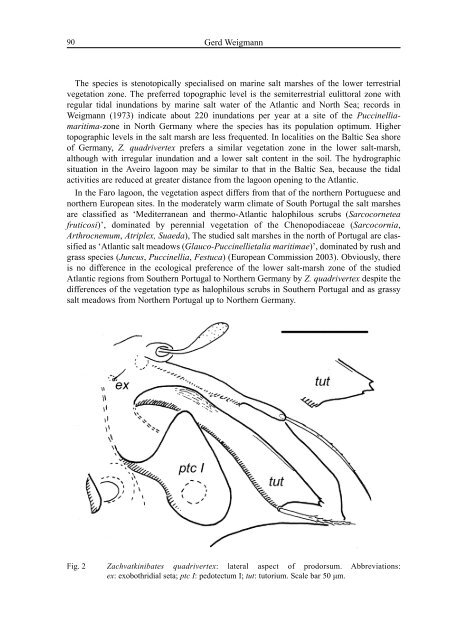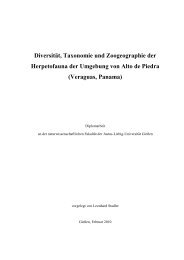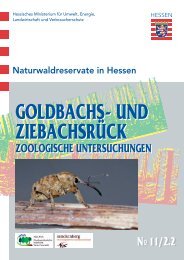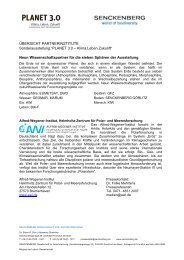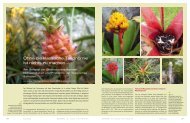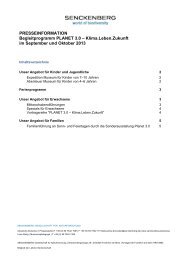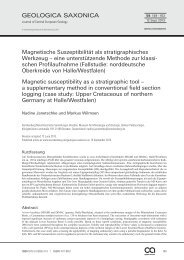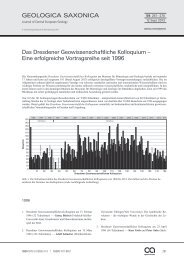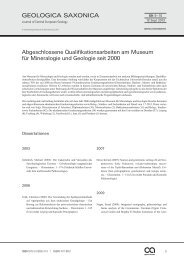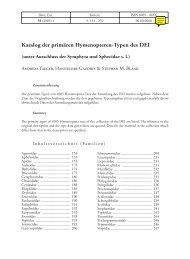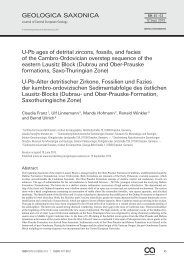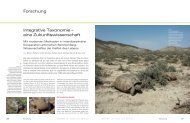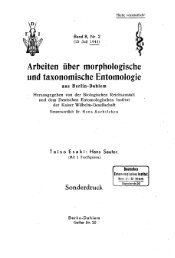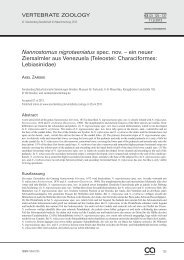Oribatid Mites (Acari: Oribatida) - Senckenberg
Oribatid Mites (Acari: Oribatida) - Senckenberg
Oribatid Mites (Acari: Oribatida) - Senckenberg
You also want an ePaper? Increase the reach of your titles
YUMPU automatically turns print PDFs into web optimized ePapers that Google loves.
90<br />
Gerd Weigmann<br />
The species is stenotopically specialised on marine salt marshes of the lower terrestrial<br />
vegetation zone. The preferred topographic level is the semiterrestrial eulittoral zone with<br />
regular tidal inundations by marine salt water of the Atlantic and North Sea; records in<br />
Weigmann (1973) indicate about 220 inundations per year at a site of the Puccinelliamaritima-zone<br />
in North Germany where the species has its population optimum. Higher<br />
topographic levels in the salt marsh are less frequented. In localities on the Baltic Sea shore<br />
of Germany, Z. quadrivertex prefers a similar vegetation zone in the lower salt-marsh,<br />
although with irregular inundation and a lower salt content in the soil. The hydrographic<br />
situation in the Aveiro lagoon may be similar to that in the Baltic Sea, because the tidal<br />
activities are reduced at greater distance from the lagoon opening to the Atlantic.<br />
In the Faro lagoon, the vegetation aspect differs from that of the northern Portuguese and<br />
northern European sites. In the moderately warm climate of South Portugal the salt marshes<br />
are classified as ‘Mediterranean and thermo-Atlantic halophilous scrubs (Sarcocornetea<br />
fruticosi)’, dominated by perennial vegetation of the Chenopodiaceae (Sarcocornia,<br />
Arthrocnemum, Atriplex, Suaeda), The studied salt marshes in the north of Portugal are classified<br />
as ‘Atlantic salt meadows (Glauco-Puccinellietalia maritimae)’, dominated by rush and<br />
grass species (Juncus, Puccinellia, Festuca) (European Commission 2003). Obviously, there<br />
is no difference in the ecological preference of the lower salt-marsh zone of the studied<br />
Atlantic regions from Southern Portugal to Northern Germany by Z. quadrivertex despite the<br />
differences of the vegetation type as halophilous scrubs in Southern Portugal and as grassy<br />
salt meadows from Northern Portugal up to Northern Germany.<br />
Fig. 2 Zachvatkinibates quadrivertex: lateral aspect of prodorsum. Abbreviations:<br />
ex: exobothridial seta; ptc I: pedotectum I; tut: tutorium. Scale bar 50 µm.


